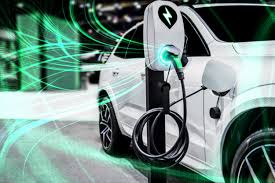The automotive industry is undergoing a significant transformation, driven by the increasing adoption of electric vehicles (EVs). As concerns about climate change and air pollution grow, EVs are emerging as a sustainable and efficient alternative to traditional gasoline-powered cars. This article delves into the key factors driving the rise of EVs, the latest advancements in technology, and the challenges that lie ahead.
Key Factors Driving the EV Revolution
Environmental Benefits:
- Reduced Emissions: EVs produce zero tailpipe emissions, contributing to cleaner air and a healthier environment.
- Lower Carbon Footprint: The production of electricity, even from fossil fuel sources, often has a lower carbon footprint than the extraction and refining of gasoline.
Government Incentives:
- Subsidies and Tax Credits: Many governments offer financial incentives to encourage EV adoption, making them more affordable for consumers.
- Infrastructure Development: Governments are investing in charging infrastructure to support the growing number of EVs on the road.
Technological Advancements:
- Increased Battery Range: Battery technology is rapidly improving, enabling EVs to travel longer distances on a single charge.
- Faster Charging Times: Advanced charging technologies are reducing charging times, making EVs more convenient for daily use.
Challenges and Opportunities
While the future of EVs looks promising, several challenges remain:
- Battery Costs: The high cost of batteries is a significant barrier to widespread EV adoption.
- Limited Charging Infrastructure: The availability of public charging stations, especially in rural areas, can be a limiting factor.
- Range Anxiety: Consumers may be hesitant to purchase EVs due to concerns about their range and the availability of charging stations.
To overcome these challenges, automakers and governments are working together to develop innovative solutions. These include:
- Battery Recycling and Reuse: Recycling battery materials can reduce costs and environmental impact.
- Expanded Charging Infrastructure: Investing in a robust charging network is essential to support the growing number of EVs.
- Advanced Battery Technologies: Research and development in battery technology can lead to higher energy density and faster charging times.
Conclusion
The rise of electric vehicles marks a significant shift towards a more sustainable future. As technology continues to advance and government policies support their adoption, EVs are poised to revolutionize the automotive industry. By addressing the challenges and seizing the opportunities, we can accelerate the transition to a cleaner and more sustainable transportation system.
Powered by Froala Editor
